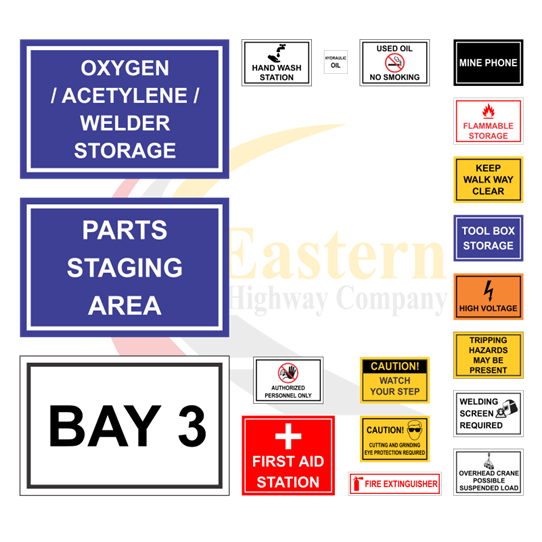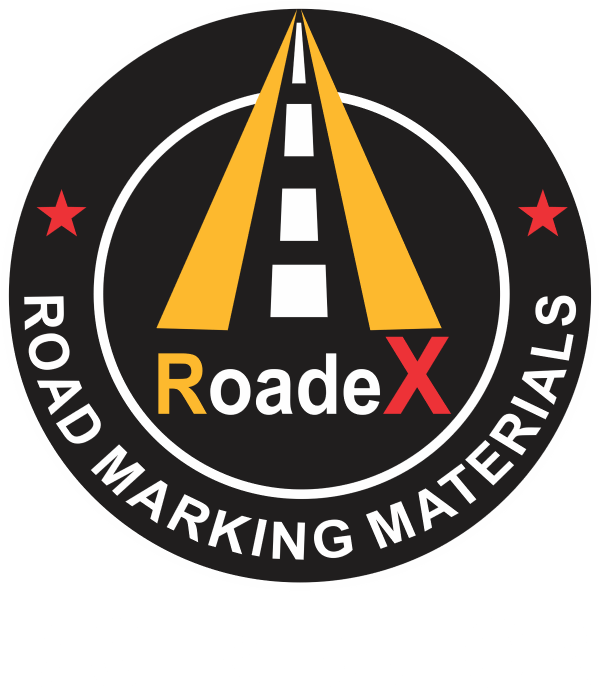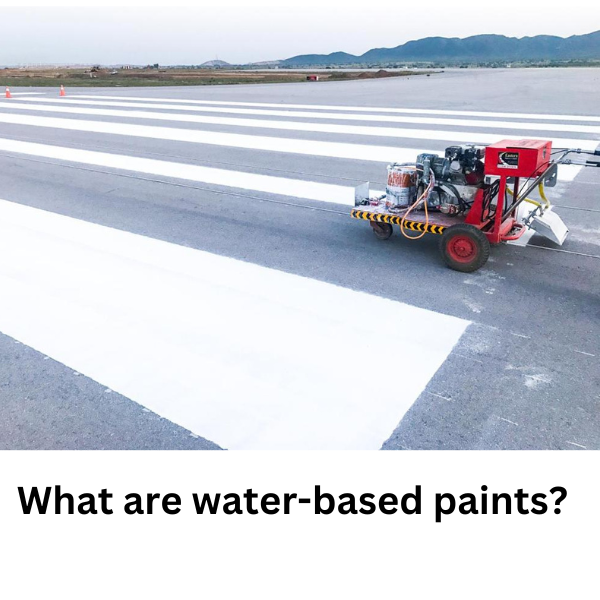Mining safety signs are placed in and around the mines for the safety of mining workers and visitors.
Mining is one of the most hazardous industries in the world. With the inherent risks of working in mines, safety is a top priority. One of the critical aspects of maintaining safety in mines is the use of mining safety signs. These signs are essential for communicating potential hazards, providing instructions, and ensuring safety protocols are followed.
In this blog, we will delve into what mining safety signs are, their significance, where they are used, and the different types available.
What Are Mining Safety Signs?
Mining safety signs are visual boards designed to communicate important safety information to mine workers and visitors. These signs play a crucial role at mining sites like:
- It conveys warnings about potential hazards
- These signs provide mandatory instructions and guide workers to safety equipment and exits.
- These are an integral part of a mine’s safety management system, helping to prevent accidents and injuries.
Types of Mining Safety Signs
There are several types of mining safety signs, each serving a specific purpose: These signs are:
Warning Signs
Warning signs alert workers to potential hazards and dangers. Some examples of these mining safety signs include:
- Danger Blasting Cone: Indicates areas where blasting operations are ongoing.
- Explosion Hazard: Warns about the risk of explosions and advises against open flames.
- Confined Space: Alerts workers to confined spaces that may pose suffocation or entrapment risks.
- Acid / Corrosive: Alert the people about hazardous substances, acids, or even poison. It can also be indicated as a chemical storage area.
- Asbestos: Alert people that this area may contain asbestos
- Compressed Air Hazard: Warns about areas where high-pressure air is used, which can be dangerous if mishandled.
- High Voltage: Indicates areas with electrical hazards that could cause serious injury or death.
- Radiation Hazard: Warns about areas where radioactive materials are present.
- Falling Rocks: Alerts workers to areas where there is a risk of falling rocks or debris.
- Noise Hazard: Indicates areas with high noise levels, and hearing protection is required.
Prohibition Signs
Prohibition signs indicate actions that are not allowed to ensure safety. Some common prohibition signs in mines include:
- No Smoking: Common in areas with flammable materials or gas leaks.
- Do Not Enter: Used in restricted areas or where there is an immediate danger.
- No Unauthorized Personnel: Indicates areas that are off-limits to unauthorized individuals.
- No Photography: Restricts the use of cameras in sensitive or dangerous areas.
- No Mobile Phones: Prevents the use of mobile phones in areas where they could interfere with equipment or ignite flammable substances.
- No Smoking: Common in areas with flammable materials or gas leaks.
Mandatory Mining Signs
These signs specify actions that must be taken to ensure safety. Examples include:
- Wear Protective Gear: Indicates that Personal Protective Equipment (PPE) like helmets, gloves, or respirators must be worn.
- Follow Safety Procedures: Reminds workers to adhere to specific safety protocols.
- Eye Protection Required: Indicates areas where eye protection is necessary.
- Hearing Protection Required: Indicates areas where hearing protection must be worn.
- Hand Wash Station: Reminds workers to wash their hands in designated areas to maintain hygiene and safety.

Emergency Information Signs
These signs provide information on emergency procedures and locations of safety equipment. Examples include:
- First Aid Station: Indicates the location of first aid supplies.
- Emergency Exit: Shows the nearest exit route in case of an emergency.
- Fire Extinguisher: Identifies the location of fire extinguishers.
- Emergency Shower: Indicates the location of emergency showers for chemical exposure.
- Eye Wash Station: Shows the location of eye wash stations for rinsing out contaminants.
Directional Signs
These signs guide workers through the mine, indicating safe paths and routes. Examples include:
- Keep Right/Left: Directs traffic flow to prevent collisions.
- Exit Route: Guides workers to the nearest safe exit.
- One Way: Indicates the direction of one-way traffic.
- Stop Sign: Controls traffic flow and ensures vehicles stop at critical points.
- Pedestrian Crossing: Indicates areas where pedestrians can safely cross.
Informational Signs
Informational signs at mining sites provide general information to enhance safety awareness. Examples include:
- Safety Banners: Display safety slogans or reminders, such as “Safety First” or “Think Safety.”
- Instructional Signs: Provide detailed instructions for specific tasks or equipment usage.
- Notice Board: Displays important announcements and safety updates.
- Site Map: Provides a layout of the mining site, highlighting key areas and safety stations.
So these are the six categories in which mining safety signs are divided. All these signs play an equally important role at mining sites. Moreover, all these signs possess certain characteristics to be effective like:
- Proper visibility should make the signs to be easily seen, with large fonts and high-contrast colors.
- These signs must be made of durable materials that can withstand extreme temperatures, humidity, and physical wear.
- Messages on the signs should be clear and concise, using universally recognized symbols and simple language.
- Mining signs should follow standard designs and color codes as per the regulatory guidelines to ensure uniformity and recognition.
What are Custom Mining Safety Signs?
Custom mining safety signs are customized to meet the specific needs of different mining operations. These signs can be designed with specific messages, sizes, and materials to ensure they fit the unique requirements of a mining site. Custom signs are especially useful for:
- Unique Hazards: Addressing specific hazards unique to a particular mine.
- Branding: Incorporating company logos or specific color schemes.
- Site-Specific Instructions: Providing instructions relevant to the specific operations of a site.
The Importance of Mining Safety Signs
Mine safety signs play a crucial role in maintaining a safe working environment in the mining industry. These signs serve multiple purposes, from warning workers about potential hazards to providing critical information and directions.
The importance of mining safety signs cannot be overstated, as they are essential tools for preventing accidents and ensuring that safety protocols are followed.
Here are some key reasons why mine safety signs are so important:
Preventing Accidents and Injuries
Mining is one of the most hazardous industries where workers are exposed to various risks, including falling rocks, hazardous materials, and heavy machinery. Mine safety signs help to prevent accidents and injuries by:
- Alerting workers to hazards with signs such as “Danger Blasting Cone” or “Explosion Hazard”. These work to warn workers about areas where special caution is required.
- These also help in indicating safety zones that mark safe areas, such as muster points and first aid stations. This helps the workers know where to go in an emergency.
- Mining safety signs also instruct workers on the correct use of equipment and the necessary safety precautions, reducing the likelihood of misuse and accidents.
Ensuring Compliance with Regulations
Mining operations are subject to strict safety regulations set by organizations of the relevant country or city. Mine safety signs are a critical component of compliance with the set regulations like:
- Many safety signs use standardized symbols and messages that are recognized and mandated by regulatory bodies.
- Certain signs, such as “No Smoking” in explosive areas, are legally required to be displayed to ensure worker safety and regulatory compliance.
- Compliance with safety signage requirements is often checked during inspections, and thus proper signage helps avoid fines and legal issues.
Enhancing Safety Awareness
Effective safety programs rely on continuous awareness and education. Mine safety signs contribute to this by:
- It serves as a constant reminder of potential hazards and the importance of following safety procedures.
- Including instructional information that helps educate workers about specific dangers and safety measures.
- Promoting a safety culture that encourages workers to prioritize safe practices.
Facilitating Emergency Response
In the event of an emergency, clear and visible safety signs are vital for guiding workers to safety and facilitating a quick response:
- Signs indicating emergency exits help workers quickly find the safest route out of a dangerous situation.
- Clearly marked first aid stations ensure that injured workers can receive immediate medical attention.
- Signs identifying the locations of fire extinguishers and other emergency equipment enable quick access during a fire or other emergencies.
Improving Operational Efficiency
Mine safety signs also contribute to the smooth operation of mining activities by:
- Reducing Downtime: By preventing accidents, safety signs help maintain continuous operations without interruptions caused by injuries or accidents.
- Guiding Traffic: Directional signs help manage the flow of vehicles and personnel, reducing the risk of collisions and ensuring efficient movement within the mine.
- Clarifying Procedures: Informational signs provide clear instructions on operating procedures, helping workers perform their tasks correctly and efficiently.
Protecting Non-Workers
Mines often have visitors, contractors, and other non-workers on-site who may not be familiar with the specific hazards. Mining Safety signs help protect these individuals by:
- Restricting access to prevent untrained individuals from entering hazardous areas.
- Providing clear warnings to visitors about potential dangers through clear and visible signage and reducing the risk of accidents.
- Directional and informational signs that help non-workers navigate the site safely.
Mining safety signs are essential in promoting a safe and efficient working environment in the mining industry. They play a vital role in the mining sites. This includes preventing accidents, ensuring regulatory compliance, enhancing safety awareness, facilitating emergency response, improving operational efficiency, and protecting both workers and non-workers.
Eastern Highway Your Partner in Safety
Investing in durable, high-quality mine safety signs is crucial for maintaining a secure workplace and ensuring smooth operations. With the right signage, mining companies can significantly reduce the risk of hazards and create a culture of safety that benefits everyone involved.
Eastern Highway Company is a renowned provider of safety signs (Both indoor safety Signs and Outdoor Safety Signs) offering a wide range of products designed to meet the unique needs of the mining industry. Known for their durability and clear visibility, Eastern Highway sign boards are crafted from high-quality materials, ensuring they withstand harsh mining environments. Whether you need standard signs for common hazards or customized signs tailored to specific requirements, Eastern Highway Company can provide exactly what you need.
With customizable options, you can ensure that every aspect of your mine is covered, keeping your employees informed and protected.
For more information or to discuss your specific signage needs, contact Eastern Highway today!









